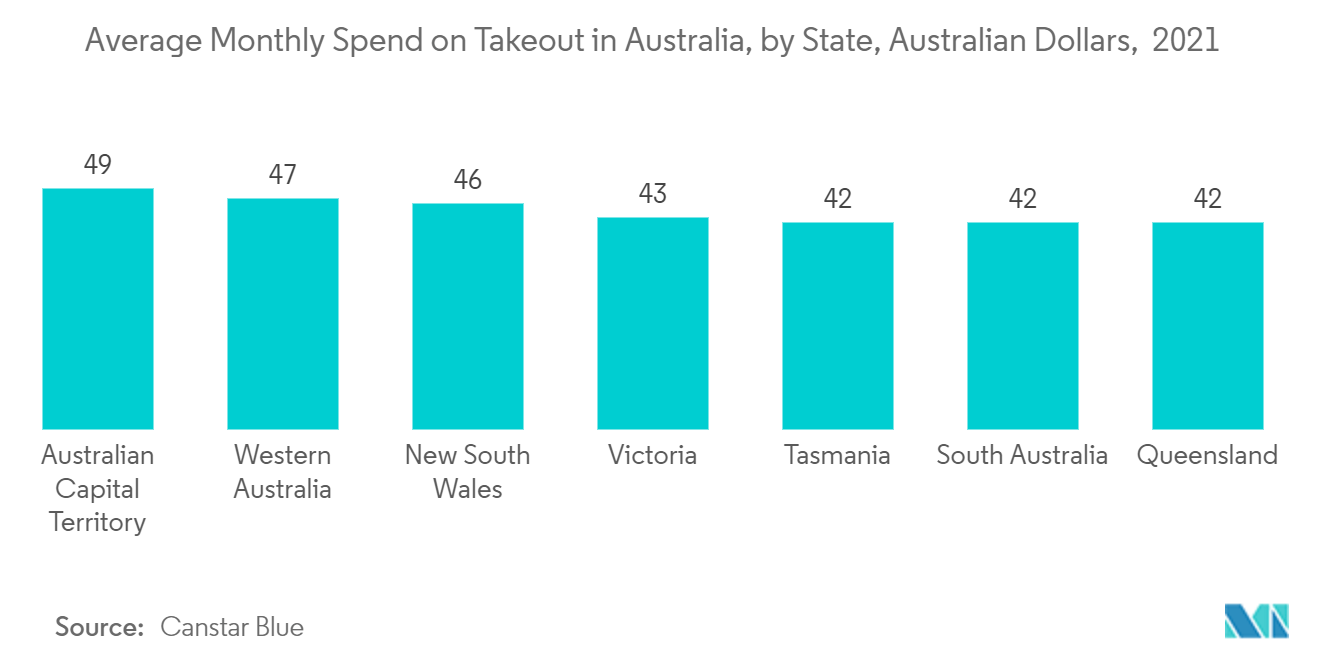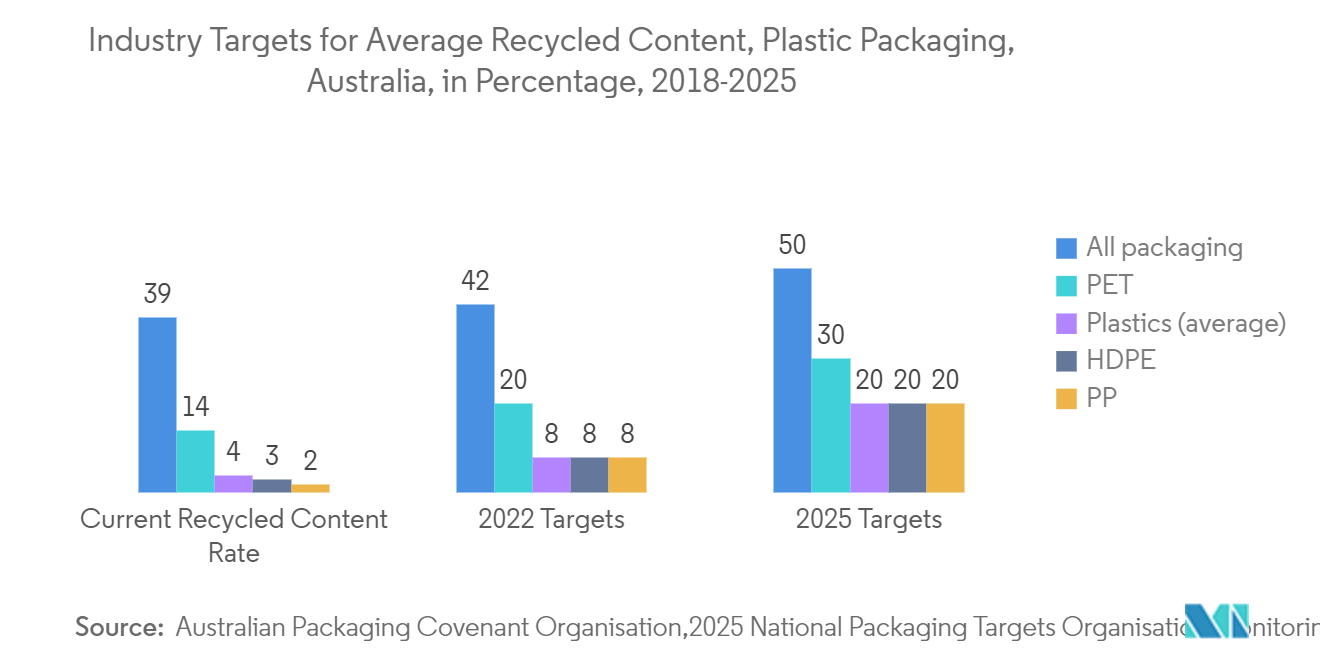Market Trends of Australia Plastic Packaging Industry
This section covers the major market trends shaping the Australia Plastic Packaging Market according to our research experts:
Increasing Demand from the Food Industry
- Due to lifestyle changes, the primary force driving Australia's plastic packaging market growth is the demand for single-serve and portable food packs. Also, an increase in cross-border e-commerce, investments in improved logistics, and bilateral trade agreements are framing Australia as a significant country in food exports.
- For instance, according to Grain Trade Australia, in FY 2020, the value of almonds exported from the country amounted to approximately AUD 647.6 million (USD 449.24 million), the highest-valued horticulture export product. Also, in terms of fresh fruit, table grapes were the highest exported product in the same year, around AUD 623 million (USD 432.2 million).
- On the production end, manufacturers have been increasing their output to cater to local and international demands. It will directly boost the plastic packaging volume in the country. For instance, according to the Australian Bureau of Statistics, in FY 2020, the total production value of almonds in the country amounted to around AUD 954 million (USD 661.2 million). Almonds were also the top nut produced in the country in terms of in-shell weight.
- Additionally, convenience food demand in Australia is rising due to consumers increasingly demanding healthy and convenient foods in terms of packaging and handling, leading to an increased usage of plastics in packaging.

Increased Eco-friendly Packaging and Recycled Plastics
- According to the Government's 2025 waste recycling plans, regulation on the commitment to reduce packaging waste generated and make recycling easier was designed. In 2019, of the 393,800 plastics collected for reprocessing, approximately 52% were reprocessed in Australia, and 48% were exported.
- The Australian Government released a plan to reduce plastic waste. Currently, 2.5 million metric tons of plastic waste is generated in Australia each year, with 13% of that recovered. The National Plastics Plan establishes benchmarks to increase plastic recycling and announces other interventions across the plastics' entire life cycle.
- The plan notes that Australia is taking responsibility for its plastic waste and that, under the Recycling and Waste Reduction Act of 2020, the export of unsorted mixed plastics is banned as of July 2021. Additional measures include a phase-out of non-compostable plastic packaging containing additive fragmentable technology that does not meet relevant compostable standards by July 2022, polyvinyl chloride packaging labels, and expanded polystyrene in consumer food and beverage containers by December 2022.
- The primary plastic beverage bottler, Coca-Cola, previously produced the country's first carbonated soft drink bottles made from 100% recycled plastic. The company plans to replace Coca-Cola Amatil's single-serve plastic bottles in Australia with new, fully recycled materials.
- Such increased concerns for recyclability in the country are boosting innovations in the market from the packaging manufacturers and end-user sectors. Bioplastics, fiber-based paper packaging, and other innovations are witnessing growth because the blend within the materials makes recycling more accessible and cheaper and reduces the decomposition time in landfills.
- On March 4, 2021, the Australian Department of Agriculture, Water, and the Environment announced the release of the country's National Plastic Plan, which outlines its approach to increasing plastic recycling, finding alternatives to unnecessary plastics, and reducing the impact of plastic on the environment.
- Similarly, Amcor launched its Amlite Ultra Recyclable, the first packaging product made from sustainable high-barrier polyolefin film. This laminate can easily package a range of food, home, personal care, and pharmaceutical products in recyclability. With recyclability, such change aims to reduce a pack's carbon footprint by up to 64%.

